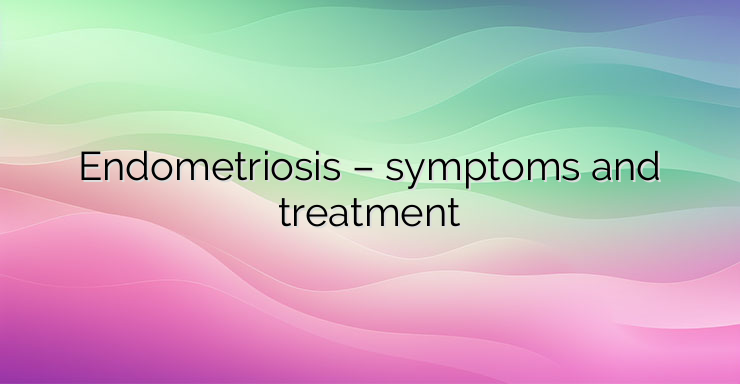What is endometriosis? Endometriosis is a disease related to the menstrual cycle. More specifically, it affects the endometrium – the lining that covers the inside of the uterus. In endometriosis, fragments of endometrial tissue grow outside the uterus and colonize other organs, including the ovaries, bladder, or rectum. Disrupted proliferation of these tissues can lead to an inflammatory reaction at each menstruation, lesions, cysts or nodules. The origin of endometriosis is still unknown, but it is certainly multifactorial. According to the National Institute of Health and Medical Research, endometriosis results from the combined action of genetic and environmental factors. If the study of this disease is still at an initial stage, it is now believed that the risk of developing the disease in women from the same family – relatives of the 1st degree is 5 times higher than in the rest of the population . The disease may also be related to environmental factors, including endocrine-disrupting agents. Endometriosis affects exclusively women of childbearing age. A woman would have an average of 450 cycles in her lifetime – this can vary depending on the number of pregnancies and the length of subsequent breastfeeding. What are the symptoms of endometriosis? Symptoms may vary for each patient. The disease is sometimes even asymptomatic. Endometriosis can be detected when fertility problems are suspected – 30-50% of women who have reproductive problems are affected by endometriosis. In 70% of affected women, endometriosis causes severe pain, especially during menstruation (dysmenorrhea) and/or during intercourse (dyspareunia), pelvic pain, lumbar or abdominal pain, fertility disorders, digestive and urinary disorders, as well as chronic fatigue syndrome. The disease is still too often associated with the characteristic menstrual pain and its symptoms are minimized. Diagnosis The variety of symptoms and the lack of knowledge about the disease make it difficult to diagnose and treat patients. According to the National Institute of Health and Medical Research, endometriosis is diagnosed an average of 7 to 10 years late. This delay impairs women’s quality of life. Several therapeutic options for treating endometriosis Endometriosis is an incurable disease. Most treatments consist of pain relief, with varying degrees of effectiveness, in the short term. Endometriosis requires special attention if it affects daily life, in case of chronic pain or infertility. The diagnosis can be confirmed by ultrasound and other additional tests. If the diagnosis is confirmed, it is imperative to start continuous medical follow-up. Among the possible therapeutic approaches are hormonal contraception and hormone therapy. The use of nonsteroidal anti-inflammatory drugs may improve painful symptoms.In case of severe endometriosis or if pregnancy is planned, surgical treatment by laparoscopy may be necessary. References: L’endometriosis, un problème de santé publique – Science & Vie (science-et-vie.com)


Leave a Reply